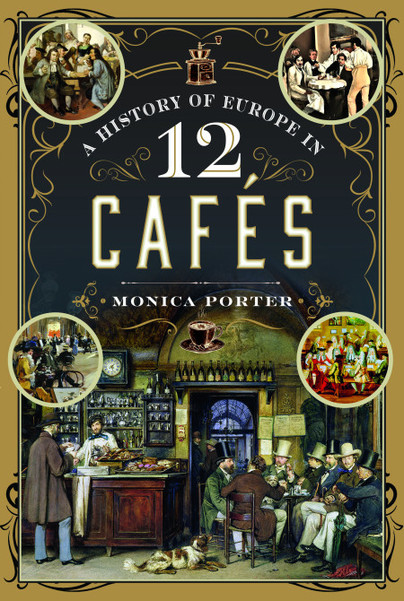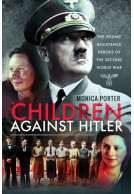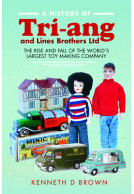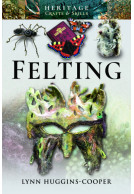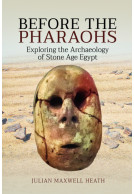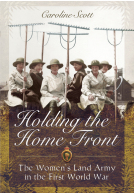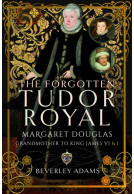A History of Europe in 12 Cafes (Hardback)
Imprint: Pen & Sword History
Pages: 216
Illustrations: 50 mono illustrations
ISBN: 9781399031523
Published: 4th April 2024
(click here for international delivery rates)
Need a currency converter? Check XE.com for live rates
Since the seventeenth century, the café, or coffee house, in Europe has been the key gathering place of innovators and mavericks – the writers, artists, philosophers and political figures who formed influential affiliations and gave birth to revolutionary movements that still affect our lives today. It was the type of establishment ideally suited for this role. Unlike the tavern, pub or bar, where one’s senses grow ever duller from alcohol, one can sit for hours in a café with like-minded companions, consuming the coffee that sharpens wits and conversations. No wonder so many new ideas were generated in the legendary cafés of Paris and Vienna, Rome and Venice, Prague, Budapest and other major European cities.
In her latest book, Monica Porter leads the reader on an entertaining waltz through six centuries, nine European countries (plus America) and a wealth of historic episodes featuring some of the most intriguing and noteworthy people who ever lived. As she reveals, playing its vital part in all their stories – at times in the background, at times front and centre – is that enticing venue: the café.
The twelve venerable establishments of the book’s title – the oldest dating from 1686, the newest from 1911 – are all still in existence. And so, after learning about their fascinating historical associations, readers can experience these places for themselves, which makes the volume an ideal companion for history buffs, travellers and café-lovers alike.
I really enjoyed reading through this book with my morning coffee. The historical significance or importance of the cafe had never really occurred to me and I learned a lot of interesting things about my favourite beverage. It occurred to me as well this book along with a bag of coffee beans would be a great Father’s Day gift for my dad (who is impossible to shop for) or any other curious coffee lovers.
NetGalley, Julia Puzara
The History of Europe in 12 Cafes spotlights coffee houses in the major cities of Europe that have been the center of some historical events. I recommend it for travelers who want to dig deeper into the history of a place. I plan to seek out some of the cafes which are still standing on my next trip. this would make a good gift for anyone interested in European history as well.
NetGalley, Lisa Stauffer
Rating: 5 out of 5 stars
NetGalley, Mandy Jenkinson
An unusual and original trawl through the history of Europe through its iconic cafés, tracing the inception and evolution of coffee houses and coffee culture, and chronicling the importance of such meeting places for writers, artists, politicians and thinkers of all stripes. I found it a wonderfully interesting account, and was thrilled to discover that many of the cafés still exist. Indeed I have visited some of them. The emphasis is on Western Europe, plus one chapter set in the United Sates, at that time still under British rule. Six centuries of coffee and cafés, with a good combination of history and biographies of the cafés’ habitués... I enjoyed it, anyway, and learnt stuff along the way. Recommended.
Rating: 5 out of 5 stars
NetGalley, Merin George
There are few things that appeal to a book reader more than cafes. Yes, we all love to go to a cafe, just chill, have a coffee and read a book. The overall vibe of a bustling cafe is beyond compare. So when I came across this book I immediately requested it. I was completely correct in assuming that the book was amazing. It had so much history about cafes I hadn't read about before, even though I love reading history books. There were so many quirky cafes like one in which one could only speak in Latin. Imagine just being able to speak one particular language in cafe. It's so great to learn that European cafes have so much culture and many great minds attached to it. Although cafes now are becoming much less so. As the author points out, cafe in the present day have fewer chances of becoming places where great revolutions began, as they get corporatized and money becomes the driving cause. Fewer cafes are likely to be the hang out of the famous "broke geniuses" or aspiring thinkers. Truly recommend this book especially to cafe lovers.
I found Monica Porter’s A History of Europe in 12 Cafes an enthralling read. With its wealth of historical information covering visual art, writing, biographical material, politics and war through the beautifully described cafes, European and American, conveyed through accessible language that almost belied the density of the content, this book is a treasure trove. A treasure for the coffee aficionado who would like to visit these cafes; for the history lover whose appetite will be slaked by the detailed accounts of political intrigue, war time measures and attendant developments; and those whose access to the culture associated with the cafes will be at once be both satisfied and keen also keen to read the material and visit the galleries that house the art described. So, upon finishing the book one is at once replete, and fighting an appetite that can only be assuaged by rereading, delving into the bibliography or visiting the sites – no mean feat as they include ten different countries, twelve coffee houses, and galleries.
NetGalley, Robin Joyce
The twelve coffee houses are listed at the end of the book, complete with addresses. Visiting them will take the reader to Oxford, Paris (two cafes), Venice, Rome, Vienna (two cafes), Budapest, Zurich, Munich, Madrid and Prague. While the American coffee houses of the revolution differed from the European examples in their lack of artistic patrons, they certainly fulfilled the political environment familiar in the first fourteen chapters of this book. Chapter fifteen, which covers the American experience is an informative political read. However, The Merchants Coffee House, on Wall Street New York was destroyed by fire in 1804; the Old London coffee house did not survive its owner’s unrealistic expectations of patrons’ behaviour and, after various businesses used it, the building it fell into disrepair and was demolished; the Green Dragon in Boston was demolished with little recognition of its past which was left to later activists to recall with a commemorative plaque.
The artistic and political figures who feature are too numerous to list. However, the title of the book tells us that it is within the cafes that the history will be found and that it is expanded is to Porter’s credit. It is worth looking inside to make some random choices to see who frequented the cafes. Writers such as James Baldwin, Simone de Beauvoir, Samuel Beckett, Elizabeth Barrett Browning, Lord Byron, Albert Camus, Fydor Dostoevsky; and artists, Dali, Paul Klee and Gustav Klimt are only a few of those who met at the cafes.
Political events, of which the Boston Tea Party, the Spanish-American War and the War of American Independence, World Wars 1 and 2 are a few examples. There are intriguing entries about absinthe (referred to over two pages and in another instance) and reflections on beer and wine; architectural styles; artistic styles; cafes used for film locations; resistance members and spies. Political figures and movements, Napoleon, Hitler, Lenin, Bolshevism, Feminism, Existentialism are but a few of the figures and movements covered.
The index is in itself a wealth of information with the plethora of material related to events, locations, titles of paintings and written material, adding to the enthusiasm with which I read Monica Porter’s book. Her ability to weave stories and facts around locations as fascinating as these coffee houses makes not only a stimulating read but one which is informative.
My grandma used to take me out to cafés wherever we were from a very early age and it always made me feel very special. To me, a café is never just the sum of goodies on offer (although it helps ☺️), it does have that uplifting atmosphere that is remniscent of all those freethinkers, authors, revolutionists, artists and ladies in flowing dresses. How many art styles, how many philosophic theories, how many plots to overthrow were conceived at those marble-topped tables?
NetGalley, Anne McCormick
The list of café afficionados is a grand one: Goethe, Rousseau, Napoleon, Benjamin Franklin, Casanova, Thomas Mann, Hogarth, Byron, Shelley, Keats, Gogol, Freud, Trotzky, Stalin, Tito, Hitler, Hemingway, Camus, Sartre, Beauvoir, Einstein, Lenin, Joyce, Havel to name but a few.
This book lets you tap into that atmosphere, marvel at the cafés’ interior design and imagine the famous faces slurping their mocha in them.
This book is also an ode to coffee, as Balzac famously enthused: “The coffee falls into your stomach and straightaway there is a commotion. Ideas begin to move like the battalions of the Grande Armée on the battlefield, and the battle begins. Memories arrive at full gallop, flags flying. The light cavalry of comparisons deliver a magnificent charge, the artillery of logic rushes in with its wagons and ammunition, the shafts of wit appear like sharpshooters.”
Thankfully, a number of those history-laden temples have survived into the present day. However: In 1683 there were more than 2,000 coffee houses in London. What on earth happened? Why replace them with bland, identikit coffee hellhole chains?
I enjoyed A History of Europe in 12 Cafés a lot! This was a fun concept for a history book, and I think Monica Porter did a great job with it! I think using cafés and coffee as the focus by which to move through European history was a novel choice and a good way to get people to look into the subject! After all, people love cafés & their ambiance, and people love coffee!
NetGalley, Samantha Santarpia
Rating: 5 out of 5 stars
NetGalley, Ink Reads
A History of Europe in 12 Cafes by Monica Porter is exceptional, gorgeous and so beautifully written. Tea is my main food group, but I absolutely devoured this delectable story of the evolution of the European Coffee House
Porter takes us on a journey through time and place, exploring the development of the imbibemet of coffee (it used to be considered an "enfeebling liquor" and the establishments to be "hotbeds of dissent and intrigue". Well, in respect of the former, contemporary coffee lovers would consider their drink of choice to prevent or restore the self from an "enfeebled" state and as for the latter, many a coffee house has sent forth the creators, the great minds and the world-changers of history
This is the beauty of this book. Beyond the history of coffee drinking and coffee houses, it chronicles notable people through history and poignant events that shaped our world as it is today. A wonderful read for lovers of history, culture, global studies, and of course, coffee.
This book is absolutely fascinating, the writing is incredibly engaging and the illustrations are perfection .
About Monica Porter
Monica Porter is a London-based journalist who has written for dozens of British newspapers and magazines. She is well-placed to write about wartime resistance, as one of her five previously published books is Deadly Carousel: A Singer’s Story of the Second World War, about her own mother Vali Racz's rescue of Jewish friends in Nazi-occupied Budapest in 1944, for which she was honoured by Yad Vashem as a Righteous Among the Nations. For more information about Monica’s work see www.monicaporter.co.uk.







